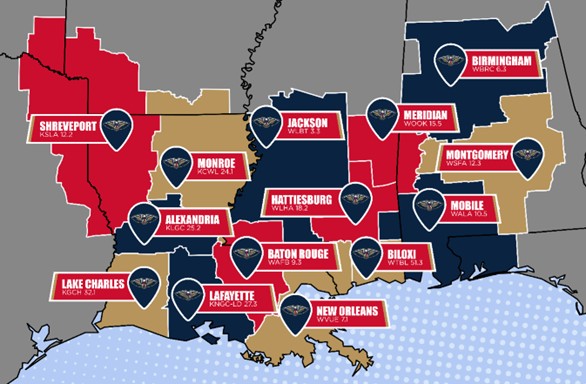Sleeping with the enemy
At the last Broadcast Engineering News Technology Summit, I asked our dinner keynote speaker, David Smith, CEO SmithGeiger, about broadcasters sharing resources and technology to reduce both CAPEX and OPEX. He replied that stations were only now beginning to change their decades-old proprietary ways and share resources. He continued that this new way of doing business must expand if TV stations expect to survive. A recent wave of articles confirms his viewpoint.
One article was titled, “Cats sleeping with dogs? Rival news orgs share content, revenue.” The article examined the experiment by AP sports editors to begin sharing sports stories among both online and print properties. The AP isn’t alone in such tests. Next year, the "Washington Post" and Bloomberg will launch a co-branded business section on the paper’s Web site, offering content from both organizations.
The cooperation is based more on economics than a desire to be friends. Today, newspapers have smaller staffs, reduced budgets, lower sales and smaller readership. Sound familiar broadcasters? The current business environment is forcing competitors into new alliances to share content — and revenue.
Broadcasters are selfish
Not so long ago, you could have counted the number of stations that cooperated to build and share a common transmission tower on two hands. It seemed that every TV station felt it necessary to spend up to $1 million just so it could have full control over one hideously expensive piece of vertical real estate. As towers became more expensive and less environmentally friendly, station managers realized that a cooperative solution was in their best interests.
This idea then expanded to where a third party built the tower and then leased space to multiple broadcasters. These kinds of solutions help conserve capital, resulting in short-term benefits. A station need only keep making rental payments. There's no huge capital outlay or ongoing maintenance, and someone else handles all the environmental issues. Such solutions allow stations to outsource an important, but expensive, component of their business.
Outsourced playout
The professional video industry's #1 source for news, trends and product and tech information. Sign up below.
The next step in this trend may be with station playout. This month, a major U.S. network will announce that it is outsourcing its channel playout to a third party. While this practice is common in Europe, it’s relatively unheard of in the United States.
The reasons to outsource channel playout are similar to outsourcing a tower. The company avoids the cost of building a new facility and required ongoing technical updates. Company staff can be redeployed or eliminated. All the headaches of staffing — including unions, training, vacations and sick days — go away. A whole range of business issues go away when a human-intensive task like playout is eliminated.
The bottom line is that CAPEX is reduced and OPEX may also be reduced by paying someone else to “play tapes.” When networks (or stations) consider what it is that they have to sell, it’s content — programs. If there is a less expensive way to move that content to viewers, why not use it? Again, just pay the rent.
Newsrooms learn to share
Now these same economic realities are forcing news directors to consider similar methods of sharing resources. In a cooperative effort called the Ohio News Organization (OHNO), several of Ohio's newspapers are beginning to share content. As print (and television) newsrooms have smaller staffs, less content is produced. By teaming up with competitors, building alliances forming strategic content partnerships, more content is developed by larger staffs across bigger markets. Once the model works, revenue sharing can begin.
In Canada, the national public broadcaster, CBC, this month began a content-sharing arrangement with the newspaper "National Post." What’s particularly interesting is that these two groups previously were intense competitors. Bloomberg’s global team leader for content syndication, Dylan Cohen, helped broker the deal, noting that reporters used to operate on the basis that if they didn’t break the story, the story didn’t exist. No news organization can operate that way today. The Internet and thousands of news providers means that audiences have a variety of ways to receive information, and choosing to ignore a story is guaranteed to lose market share.
Broadcast reality
Broadcasters are increasingly examining CAPEX and OPEX decisions with a singular eye on the company’s core business. Is it creating content or delivering content? Today, it’s both, but need that be the case?
Over the past 20 years, the broadcast market has become hugely fragmented. There are hundreds if not thousands of competitors. Broadcasters don’t enjoy the luxury of having subscriber revenue. Advertising represents the entire revenue stream. Also, fiber and broadband will enable multiple HD signals to be delivered to the home, bypassing OTA and cable television. The figure to the right shows bandwidth requirements for a digital home for multiple video channels, courtesy The Diffusion Group.
To survive, broadcast revenue must grow, or costs must be reduced. A combination of the two is an effective approach — even if it means working with former competitors. Ceasing to build and operate noncore content generation tasks and working with former opponents will become keys to survival — even if some may call it sleeping with the enemy.
